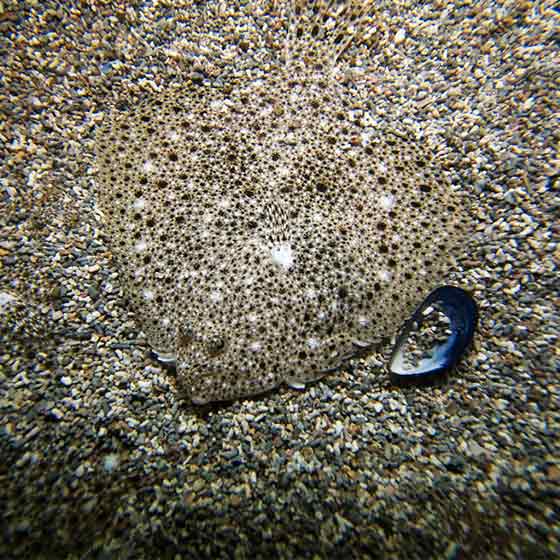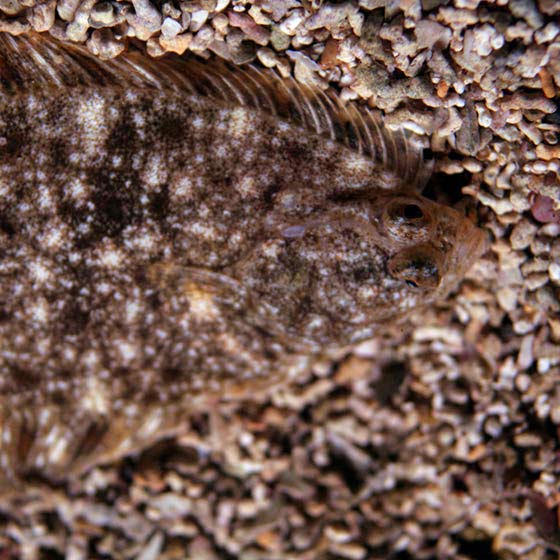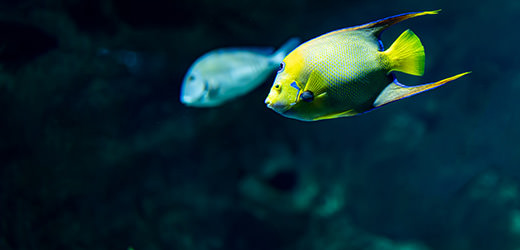Biology
During their first two or three years, turbot live close to the coastline, moving further away as they age.
Turbot, like all flatfish, have a great capacity for mimicry and continuously adapt their colour to match the ocean floor. Their eyes perceive the colour of the ground and send that information back through the nervous system to the skin’s cells, which contain black, yellow and red pigments. These pigments can be spread out or concentrated in a single, almost invisible point, to change the animal’s colour.




